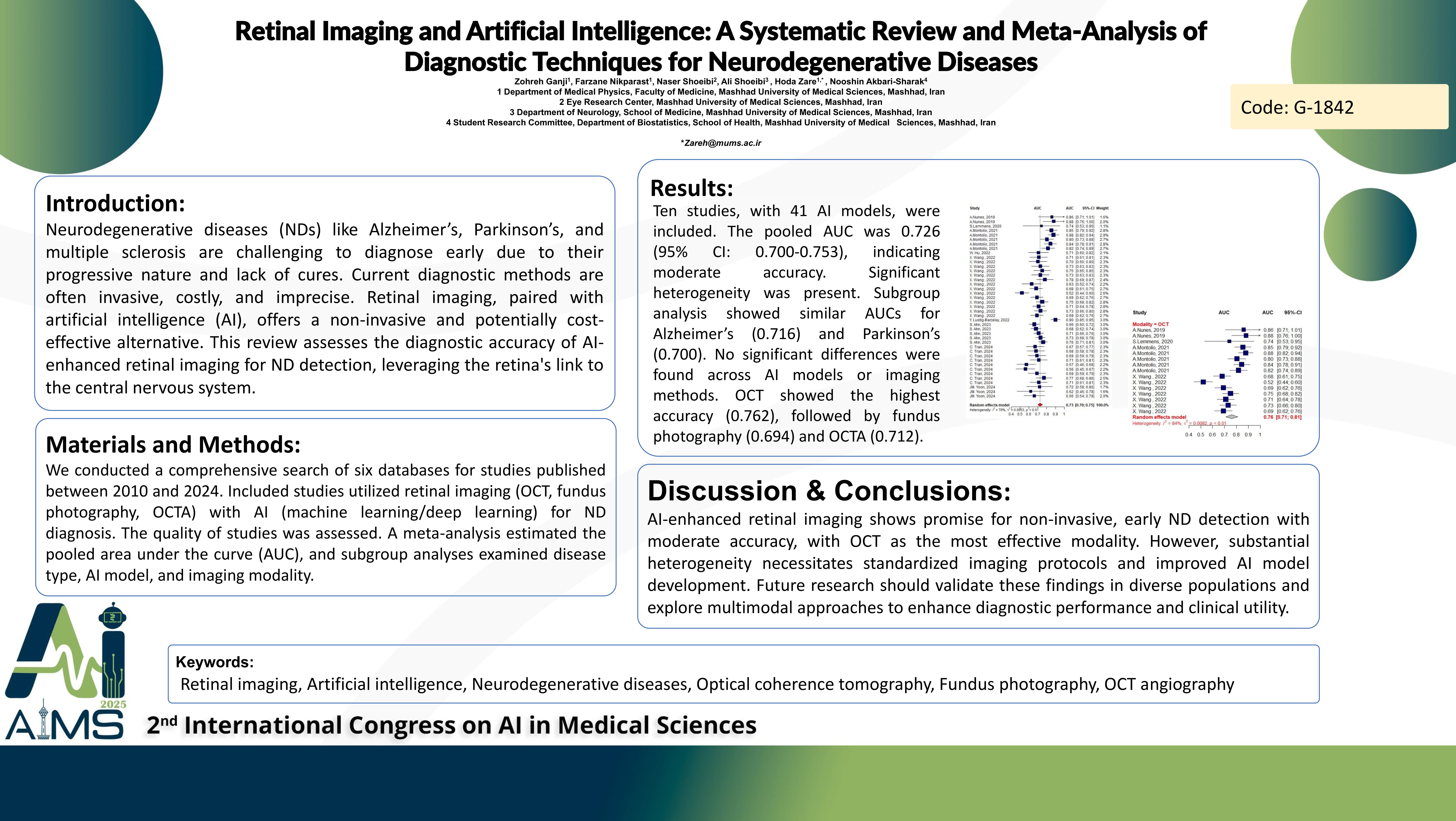Retinal Imaging and Artificial Intelligence: A Systematic Review and Meta-Analysis of Diagnostic Techniques for Neurodegenerative Diseases
کد: G-1842
نویسندگان: Zohreh Ganji ℗, Farzane Nikparast, Naser Shoeibi, Ali Shoeibi, Hoda Zare *, Nooshin Akbari Sharak
زمان بندی: زمان بندی نشده!
برچسب: سیستم های تصمیم یار بالینی
دانلود: دانلود پوستر
خلاصه مقاله:
خلاصه مقاله
Background: Neurodegenerative diseases (NDs) like Alzheimer’s, Parkinson’s, and multiple sclerosis are challenging to diagnose early due to their progressive nature and lack of cures. Current diagnostic methods are often invasive, costly, and imprecise. Retinal imaging, paired with artificial intelligence (AI), offers a non-invasive and potentially cost-effective alternative. This review assesses the diagnostic accuracy of AI-enhanced retinal imaging for ND detection, leveraging the retina's link to the central nervous system. Methods: We conducted a comprehensive search of six databases for studies published between 2010 and 2024. Included studies utilized retinal imaging (OCT, fundus photography, OCTA) with AI (machine learning/deep learning) for ND diagnosis. The quality of studies was assessed. A meta-analysis estimated the pooled area under the curve (AUC), and subgroup analyses examined disease type, AI model, and imaging modality. Results: Ten studies, with 41 AI models, were included. The pooled AUC was 0.726 (95% CI: 0.700-0.753), indicating moderate accuracy. Significant heterogeneity was present. Subgroup analysis showed similar AUCs for Alzheimer’s (0.716) and Parkinson’s (0.700). No significant differences were found across AI models or imaging methods. OCT showed the highest accuracy (0.762), followed by fundus photography (0.694) and OCTA (0.712). Conclusion: AI-enhanced retinal imaging shows promise for non-invasive, early ND detection with moderate accuracy, with OCT as the most effective modality. However, substantial heterogeneity necessitates standardized imaging protocols and improved AI model development. Future research should validate these findings in diverse populations and explore multimodal approaches to enhance diagnostic performance and clinical utility.
کلمات کلیدی
Retinal Imaging, Artificial Intelligence, Neurodegenerative Diseases
